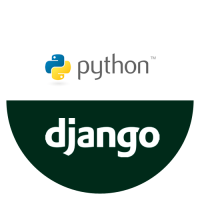
Admin Basics
21-Jan-2024Master the basics of Django Admin with our quick guide. Learn to efficiently navigate, create, and manage content in your web application's backend for seamless administration.
Introduction
Django's administration interface empowers you to effortlessly oversee your application's data, providing a user-friendly and customizable administrative hub. This documentation delves into the fundamentals of Django administration, encompassing access to the admin panel, model management, and essential tasks.
1. Basic Model Registration
To use the Django admin interface, register your models in the admin.py file:
# admin.py from django.contrib import admin from .models import YourModel admin.site.register(YourModel)
Access the admin panel at http://127.0.0.1:8000/admin/. Log in with superuser credentials to view and manage your model instances.
3. Admin Panel Navigation
Navigate through the admin panel:
- App List: Lists all registered apps.
- Model List: Displays available models within each app.
- Individual Model Pages: Allows you to view and manage records for a specific model.
4. User Management
Manage users through the Django admin:
- Create new users.
- Assign roles and permissions.
5. Customizing List Views
Customize the list view for your models:
# admin.py class YourModelAdmin(admin.ModelAdmin): list_display = ('field1', 'field2', 'field3') list_filter = ('field1',) search_fields = ('field1', 'field2') admin.site.register(YourModel, YourModelAdmin)
Perform bulk actions on selected items:
- Delete Multiple Records: Select items and click the "Delete" action.
- Update Fields: Use the "Action" dropdown to update specific fields.
7. Permissions and Security
Manage permissions for data security:
- Set view, add, change, and delete permissions.
- Control user access based on roles.
8. Customizing the Admin Site Title and Header
Personalize the admin site title and header:
# admin.py admin.site.site_header = "Your Project Admin" admin.site.site_title = "Your Project Admin"
Conclusion
Mastering these admin basics provides a foundation for efficient data
management. Explore more advanced features as your project evolves.


